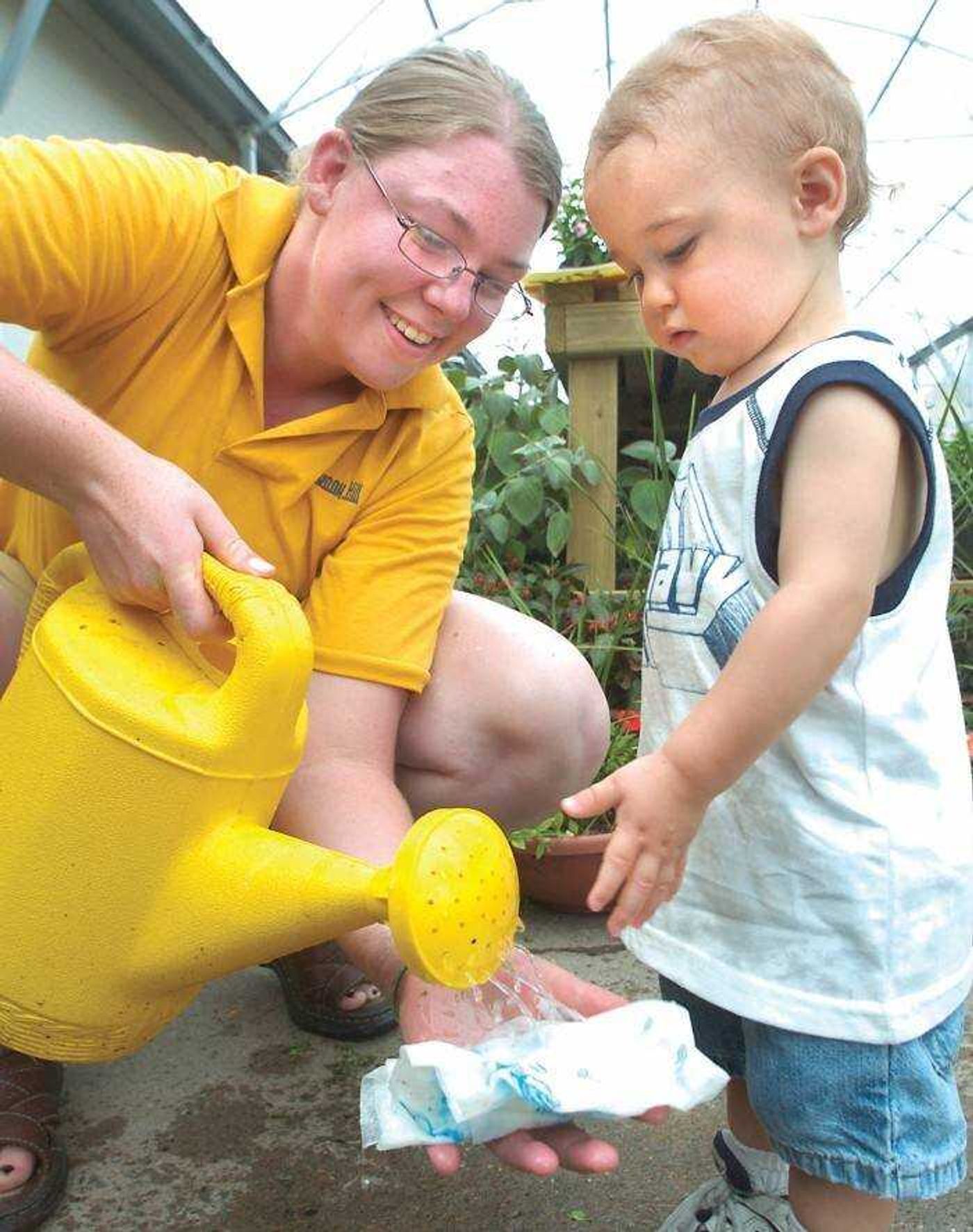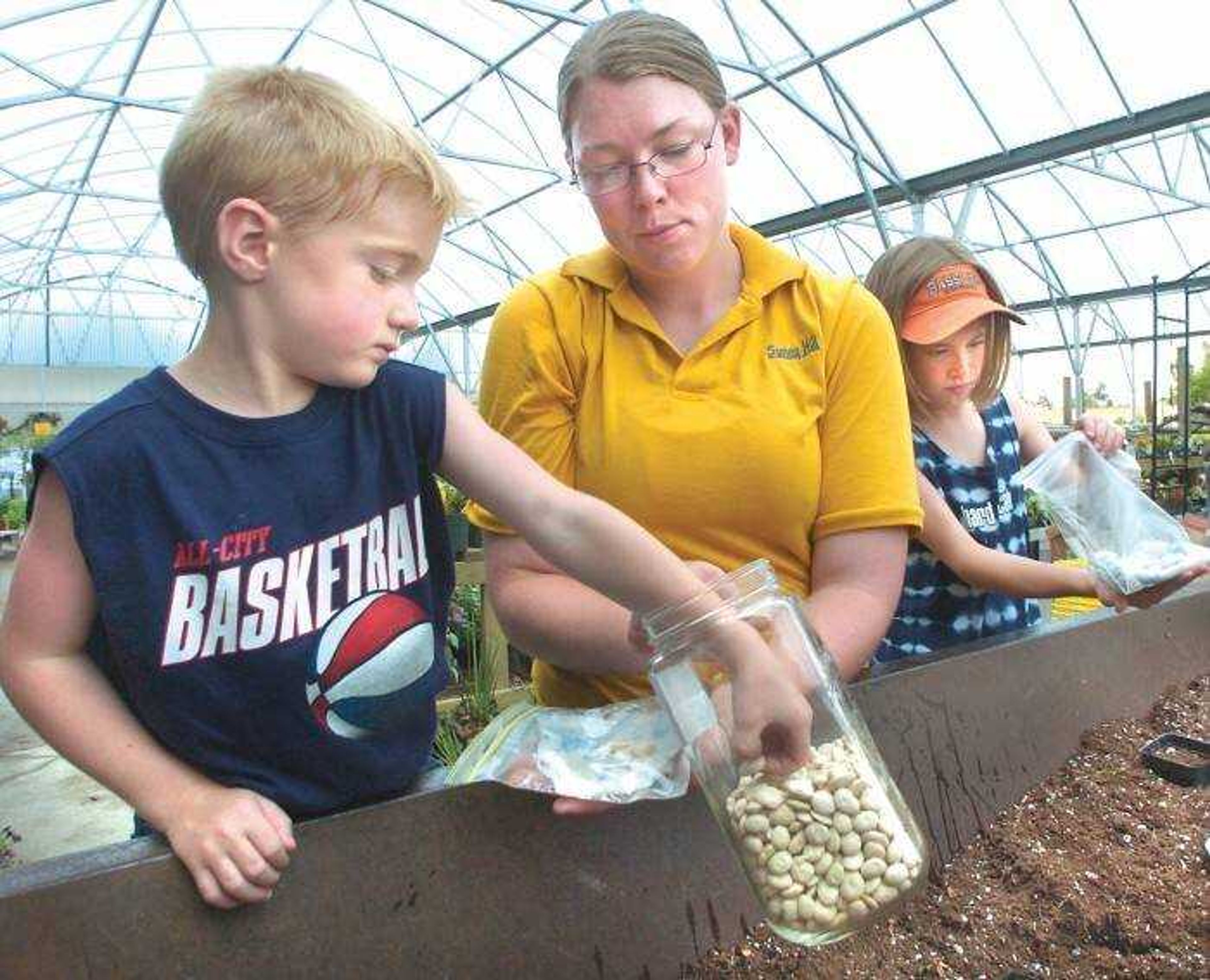How does your garden grow?
My wife and I have been blessed with the presence of our niece, Leah, for the summer. She decided she wanted to work for Uncle Paul and see what it was like in a garden center. Leah will be a senior at Concordia University in Seward, Neb., majoring in elementary education. She is a straight A student (oops, I heard she made one B); so she is smart, and she is pretty...
My wife and I have been blessed with the presence of our niece, Leah, for the summer. She decided she wanted to work for Uncle Paul and see what it was like in a garden center. Leah will be a senior at Concordia University in Seward, Neb., majoring in elementary education. She is a straight A student (oops, I heard she made one B); so she is smart, and she is pretty.
The other evening at dinner, I asked her what she has learned so far while working at the garden center. I thought she would mention the importance of proper watering, how to pot up annuals, or maybe about a new plant she had seen.
Her answer surprised me. She said she was learning that it is important to teach children about growing plants. When I pondered her answer for a minute, I began to understand where she is coming from. Since she wants to be an elementary teacher, she would look at her experience at a garden center through the eyes of a future teacher.
Since it is summer and most children are out of school right now, I thought it might be of interest for moms and dads and grandpas and grandmas to read about Leah's thoughts on teaching children about growing flowers. These ideas might develop into a great summer project for your children, or even into a lifelong vocation or avocation. So now, I am turning this column over to Leah!
Ideas from a future teacher

Well, I must say that my uncle fudges a bit; but since uncles are supposed to dote on their nieces, I'll let it slide.
When I was a child, I loved playing in the dirt. I suspect this is true of most children. They love dirt, and they love getting dirty. Gardening is a great way to cultivate their enjoyment into something more productive than a dirty shirt and a hole in the ground. A garden is a place where young minds can grow alongside the plants.
Getting children into the garden shouldn't be a problem. It has all the perks of summer: sunshine, dirt and water. Children can help with every stage of the gardening process. They can choose the flowers or vegetables they want to plant, and they can help decide where to plant them. With a bit of guidance, even preschoolers are able to dig the holes and set the plants or seeds inside. Once everything is in the ground, they can use the hose to water the plants, and clean each other off. Later, they can learn how to pull weeds and continue to care for their plants. Children will also enjoy picking vegetables once they've ripened, and they might even eat them.
The gardening idea can also be brought indoors. Plastic cups make wonderful homes for grass seed or lima beans. Children will enjoy checking on the plants to see if they have sprouted or measuring how much they've grown. A fun way for children to watch the changes of the seed is by "planting" one in a plastic sandwich bag. Lima beans, or any large seed, will work best. Simply place one or two wet paper towels in the bag, lay the bean on top, seal the bag, and watch the seed grow. They will see how it sprouts and sends out roots.
As they're waiting for their seeds to grow, children can travel to the local library and pick out several books on seeds and plants. Don't think that picture books are too simplistic for older children, though. Eric Carle's "The Tiny Seed," Ruth Krauss's "The Carrot Seed," Molly Aloian's "The Life Cycle of a Flower," and Eve Bunting's "The Sunflower House" are good reads for even advanced readers.
Gardens are great places for children. They will become decision-makers and problem-solvers as they decide which plants to plant where. They will learn how plants grow and how food is made as they care for their seeds and gardens. But perhaps more importantly, they will learn that someone loves them as they spend time with a cherished adult in the dirt.
Send your gardening and landscape questions to Paul Schnare at P.O. Box 699, Cape Girardeau, Mo. 63702-0699 or by e-mail to news@semissourian.com.
Connect with the Southeast Missourian Newsroom:
For corrections to this story or other insights for the editor, click here. To submit a letter to the editor, click here. To learn about the Southeast Missourian’s AI Policy, click here.











